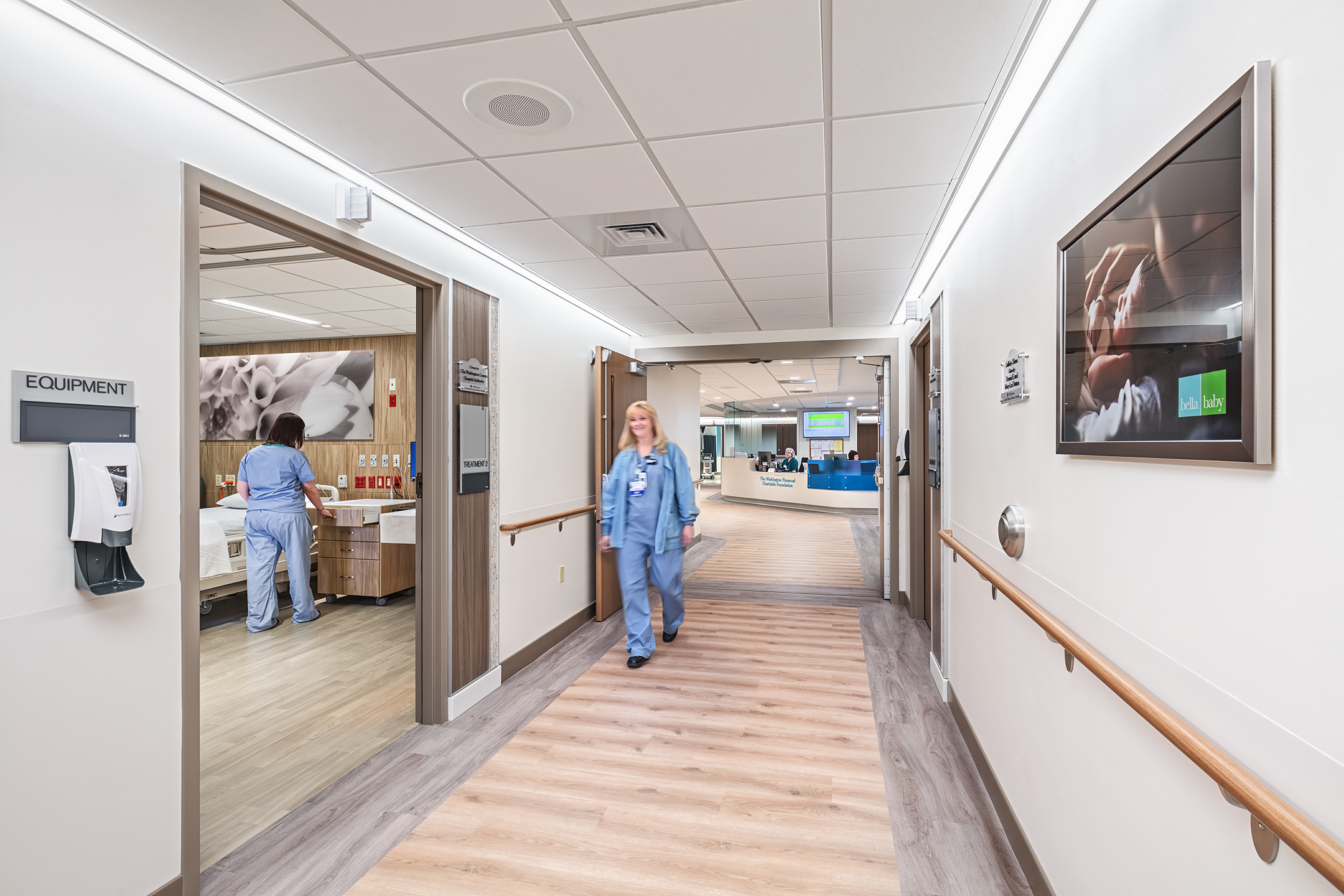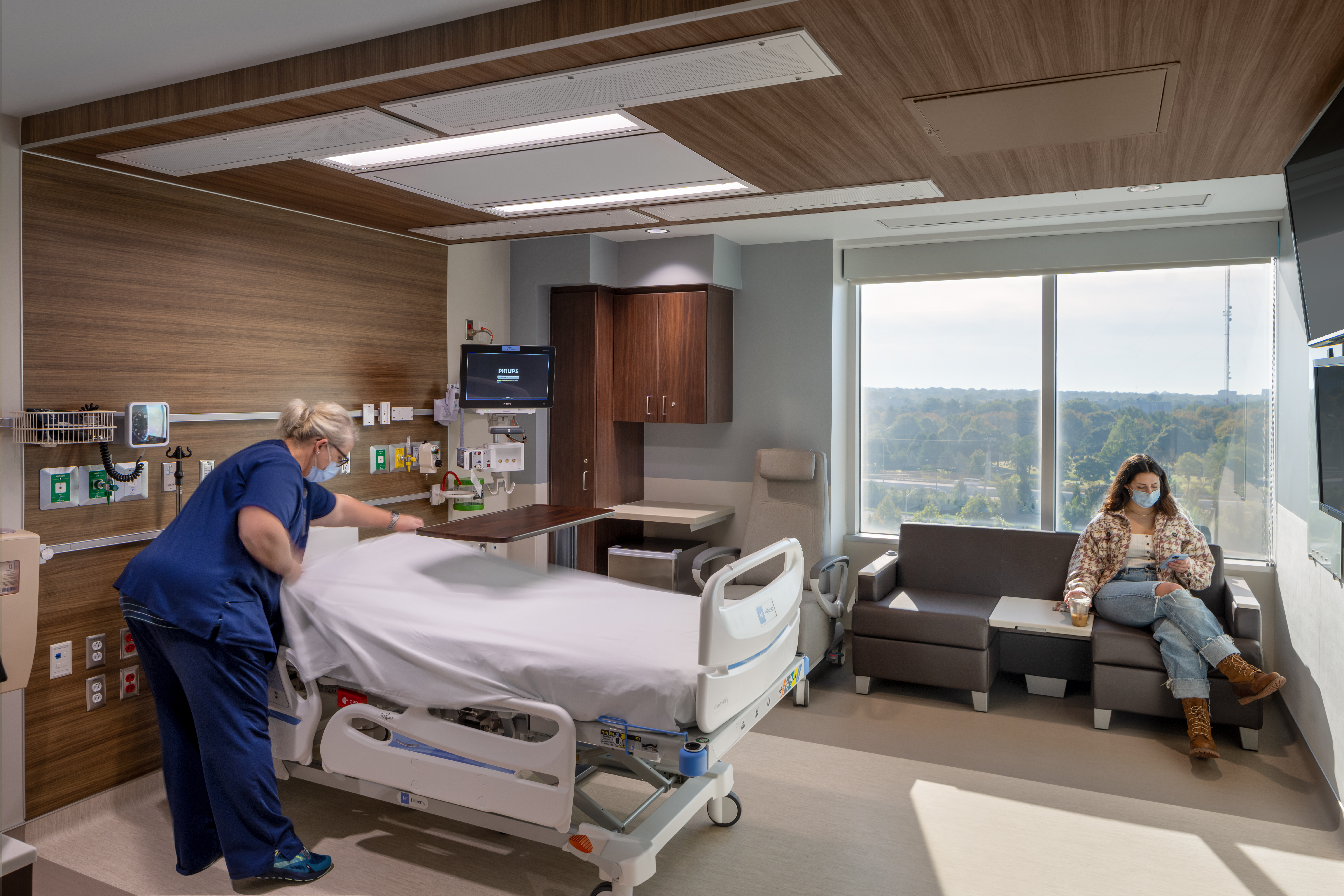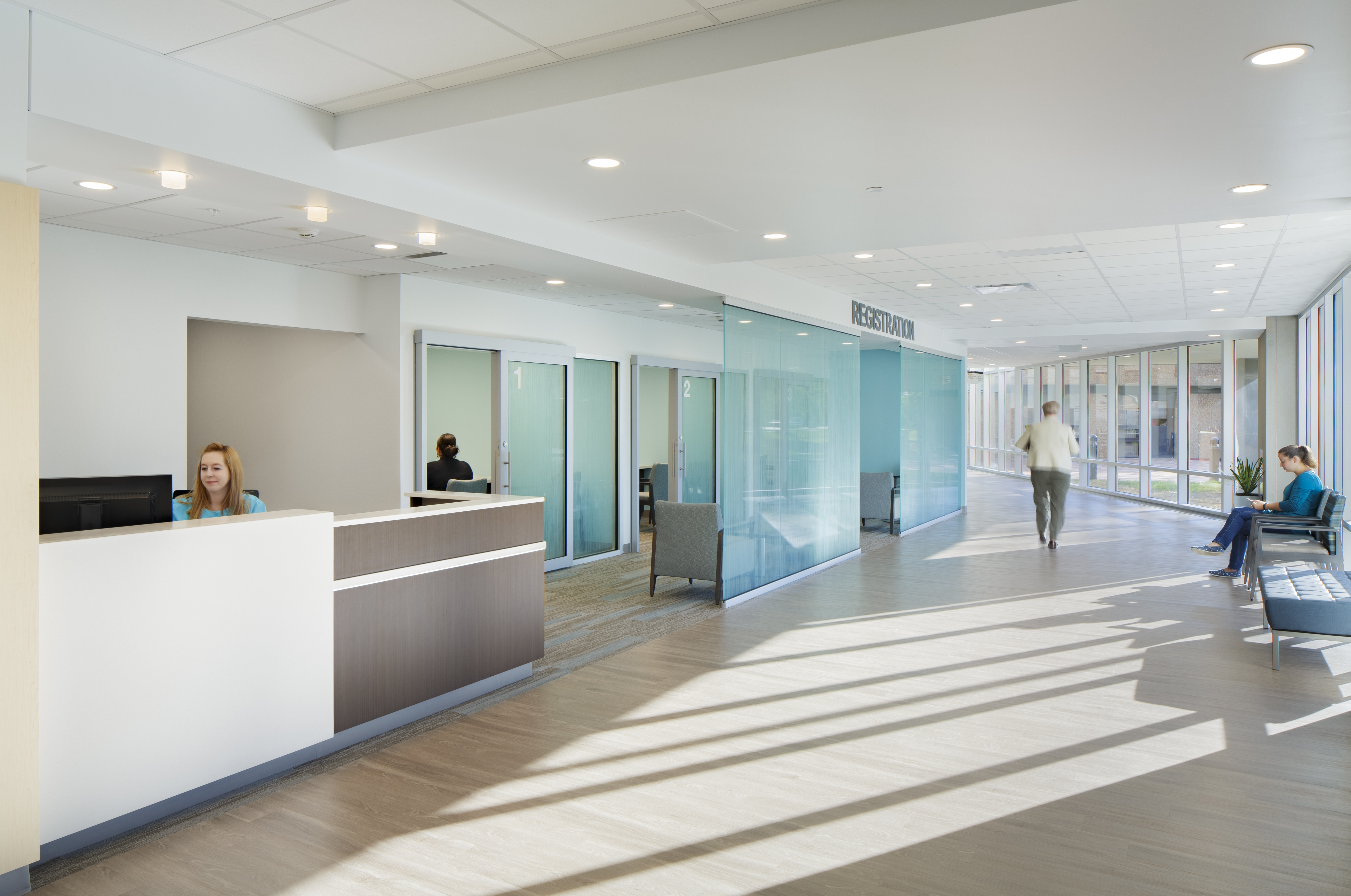The term “continuous improvement” perfectly sums up the purpose and potential of the patient room. Here are five proven ideas to help this hospital mainstay do even more – no matter what the future brings.
By Chris Haedt
AIA, NCARB, ACHA, LEED AP BD+C
Principal, Columbus Healthcare Practice Group Leader
Let’s be real – no one wants to stay in a hospital. Until we create a medical ward like Star Trek, where diagnosis and cure are provided almost instantly, we’ll need hospitals and beds. And as we’ve discovered in 50 years of healthcare design, there are always ways to improve them. The best institutions are never satisfied. They always seek new ways to serve and accommodate patients, visitors, and staff.
So if you aren’t thinking about revitalizing your beds, or evaluating the number you have, it’s probably time you did. The best way to start is by defining what you need, then applying strategies to get it right. Here are five future-focused ideas to consider, and some real-life examples that show what’s possible.
1. Improve Bed-to-Care Dependencies
In a hospital setting, not all beds need the same considerations. As you think through any bed expansion, it’s critical to understand the inter-dependencies those beds have with other services in the hospital. For example, DesignGroup recently assisted a hospital client expand its facility. As a PCI-designated stroke center, understanding the relationship between its ICU beds and the rest of the hospital was crucial for ensuring life-saving care. Most of the patients in neuro specialty ICU beds enter through the emergency department, and from there speed is essential for imaging and surgical interventions.
Yet even more important is how these patients (in their most delicate and vulnerable state) are transported from the surgical department to their patient rooms. During that journey, there isn’t a lot of life-saving infrastructure in hallways or elevators, so placing ICU rooms a short distance from the surgical platform helps get patients to a stable location as quickly as possible. The alignment of these floors allowed the clinical team to move quickly between all stages of the care process.
Healthcare design is about putting decisions like these into perspective. A friend of mine recently experienced this stroke-care journey. Although his case was rocky, his amazing clinical team – and the improved alignment of emergency care and ICU bed – saved his life. And for that I am forever grateful.

2. Simplify and Update
Patient rooms today have changed from their original design intent. As many hospitals upgrade their inpatient floors, simplicity is key. It allows uniformity for staff between old and new units, ease of use by patients and family, and cleanability for infection prevention.
As DesignGroup worked through this process with a recent bed tower expansion, our team worked hand-in-hand with clinical leaders and hospital administration to define both the pain points and successes of their current inpatient floors. For this project, most of our work involved editing the original room by studying and discussing what could be removed or integrated in a better way. This wasn’t only about the perspective of infection control, maintenance, family, or staff, but also included how the space looked and felt – making sure it would work within the culture of the hospital.
The result of this exercise: a room design that echoed what had worked in the previous design but brought new improvements to patient satisfaction, better meeting the clinical team's needs through contemporary headwalls, new medical fixtures, and bright and welcoming finishes. Bringing in a simplified design also allows for ease of integration of forthcoming technologies, allowing the room to adapt long into the future.

3. Design for Flexibility
In every conversation I have with hospital leaders, a major pain point is the possibility of shutting down beds. As many health systems deal with staffing shortages (especially in more advanced care settings), leaders are looking to flex or cross train their staff for greater flexibility on bed floors. From disrupting the care team ratio of the unit, to backing up services elsewhere in the facility, most health systems want to keep their beds open and operational if they possibly can.
That means if you’re starting any bed project and evaluating if you have enough (or too many), you should discuss flexibility. And it’s best to look at it in a multi-faceted way: in terms of clinical care, maintenance, and a mindset of future possibility. In a recent project with a clinical team, the big-picture discussion was about building ICU-level care on all floors. But starting day one only one true ICU floor and two medical/surgical floors that could be upgraded. Each updated room would use a modular headwall/footwall system, allowing for the easy transition in the future to additional medical gasses and power needed in an ICU room without heavy construction.
Most important with flexibility is anticipating how technology could change in the future. Hospital beds are designed years before they are ever implemented. Using these modular systems in rooms means quick and easy transitions from, for example, a more analog patient care board to a fully integrated digital patient care system. While modular solutions should be evaluated to meet specific goals and budgets, it can be a very effective way to reduce downtime and future-proof room design.

4. Think Holistically
When you establish a patient room, it’s not just for them, of course. It needs to serve a wide array of people who will be in and out of it, around the clock, during the patient’s stay. Our job is to design rooms to reduce stress for all of them. And one way to do that is to build upon the different room zones: care team, patients, and family.
For the patient and family, we try to provide as much comfort as possible to accelerate recovery. This is where we can learn from hospitality – in this sense, we are catering to the consumer. Patients and family want comfortable, clean environments that affords them ownership of the space for healing. Clinical teams on the other hand need to monitor their patients. Our job is to help reduce the footsteps into the room to check in on a patient, help improve the visibility to the patient, and reduce the clutter of the items that may need to provide the care.
Simple concepts can be applied to keep staff organized, while helping reduce the perception of “institutional-ness” in the room, such as not mounting glove box holders on the wall. Instead, adding integrated storage solutions to the casework allow these items to be organized and out of sight. Finally, we want to minimize the time spent servicing and maintaining these rooms. From materials management to EVS, we look for ways maintenance staff can access the room without entering it – using concepts like double-sided nurse servers and inboard toilet rooms.

5. Listen to Your Teams
When we talk about the room of the future, it usually involves technology. But in my opinion, the room of the future has many connotations. Whatever you do, it should be rooted in the culture of your institution. If you can’t make it “sticky” with your culture and staff, it’s an investment that may not pay off. I recommend taking a deep dive with your front-line care teams – what are their pain points and aspirations? Speaking with staff recently, one of their frustrations was simply spending time messing with remotes and TV functionality, and getting things for the family members. The solution was finding systems that were easier to interface with – touch screen panels at the bedside table, for example – that allowed for the control of MyChart or the TV channels.
To the Future
With the introduction of AI and new technologies, we are on a rapidly changing road. We are already seeing remote patient monitoring with cameras and wearable devices that allow clinical teams to keep an eye on patients without the constant disruption into their rooms. Very quickly we might see this shift to integrating holographics or other digital technology bringing advanced specialty care and people into the patient room (something I’m sure we all wished we had during the pandemic). These are all just applied technologies, and they should be seen as supportive tools that enhance the care delivery and culture of your institution.
A friend of mine recently told me that what she loves about our industry is that we are always looking forward to “what can be.” Any inpatient renovation can be a huge undertaking, and these rooms need to be able to function 10+ years into the future. Remembering these five basic strategies can help create flexible spaces that adapt over time to your needs, your people, and your culture.

Christopher Haedt, AIA, NCARB, ACHA, LEED AP BD+C | Principal, Columbus Healthcare Practice Group Leader
Chris began his career at DesignGroup in 2007. With over 20 years of experience, he has earned a reputation for design excellence. He leads the Columbus Healthcare Practice Group and has worked extensively with key clients such as OhioHealth and Norton Healthcare. Chris is a leader within the AIA Columbus Healthcare Committee, has spoken nationally and is an Advisory Board member for Healthcare Facilities Symposium & Expo. In 2023, Chris received the AIA Young Architects Award, an honor bestowed to individuals who have demonstrated exceptional leadership and made significant contributions to the architecture profession early in their careers.
